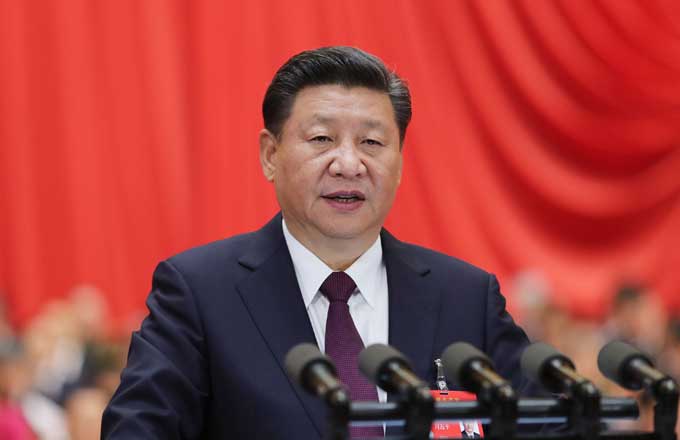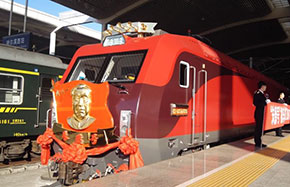Journey of a lifetime
Rally drivers seek adventure on the Old Silk Road, Matthew Fulco reports in Shanghai
Liu Guosheng favors the road less traveled - or at least one that has not gotten much use in the past millennium. The Henan province native's Hamburg-based travel company China Tours Hamburg GmBH organizes transcontinental car rallies along routes of the famed Silk Road, named for the lucrative trade that first brought China into large-scale contact with Central Asia and Europe.
The first rally in 2006 started off in Hamburg and finished in Shanghai 72 days, 18,000 kilometers and eight countries later. Participants drove 47 "classic" cars, which were more than 20 years old, including vintage BMWs, Mercedes and Volkswagens. Aside from one vehicle that broke down in Russia, all the cars reached their destination.
Since then, China Tours Hamburg has organized a car rally between Hamburg and Shanghai every year, but 2013 marks the first time for the rally to start in China and follows a westward route to Europe.
With the 26 rally participants in the arduous 56-day, 16,000-kilometer route, China Daily caught up with Liu Guosheng in his Shanghai office for the inside story on traveling "the New Silk Road".
How did you come up with the idea for a transcontinental car rally?
I have lived in Germany for more than 25 years and worked in the travel industry almost as long. My company, China Tours Hamburg, is the largest of its kind in Germany and specializes in providing distinctive China travel experiences to German visitors.
Before 2006, we did do some private car rallies, but that year we decided to do it on a larger scale because it was the 20th anniversary of Shanghai and Hamburg becoming sister cities.
The reaction from rally participants and media covering the event was so positive that we decided to make it an annual thing.
Are there any other reasons you have chosen Shanghai and Hamburg as the departure and arrival cities for the New Silk Road rally?
The ancient Silk Road stretched from Xi'an (then known as Chang'an) to Rome and thrived during the apex of the Tang Dynasty (AD 618-907) in the second half of the seventh century and first half of the eighth century.
At that time, Xi'an was the cosmopolitan capital of China and the center of Eastern civilization. Rome was its counterpart in the West.
Today, the importance of trade along the Silk Road remains but the biggest players have changed. Shanghai and Hamburg are the most important port cities and commercial hubs in their respective countries, which enjoy an enduring friendship and robust commercial ties.
In that sense, the two cities are good representatives of the modern East and West.
How are participants for the rallies selected? Do they have to meet any special requirements?
There is no formal selection process. People learn about the rallies mainly by word-of-mouth. They do need to have a sense of adventure, curiosity about the world and a durable car in proper working condition. Long-distance driving experience helps.
We do have mechanics that travel as part of the entourage. They can fix minor problems, but if something major happens - like a car's transmission blows - the car owner is responsible for repairs.
We will help to contact local maintenance services. If the problem is too serious to be fixed, we'll arrange for the car's return to their homeland. In that case, the car owner would probably have to drop out of the rally.
How common is it to have repeat participants?
For most people, it's a once-in-a-lifetime experience.
Which part of the journey is most challenging?
The Central Asian leg - Kyrgyzstan, Uzbekistan, Kazakhstan. These are developing countries.
Some of the roads are in poor condition and a lot of the terrain is desert, so it tests your driving skills and endurance more than the other parts of the trip.
Accommodations there are quite basic too. You're not going to find many five-star hotels.
But culturally, Central Asia is rich and different from either China or Europe. There is a lot to see and experience.
How do you ensure participants are able to pass safely through the many different countries on the journey?
Each participant in the rally requires six visas. It took us more than three months to do all the paperwork.
We have dedicated local partners in every country at the relevant bureaus. We inform them well in advance of our date of arrival so they know we are coming.
It isn't every day that they see a caravan of drivers from Europe or China crossing their border.
This preparation helps us avoid something unpleasant, like someone being stuck in a customs office for a day with no explanation. That can spoil the trip.
This year, Chinese drivers join the rally for the first time. How are you managing their expectations?
Chinese drivers want to devote more time to the European leg of the journey. Europeans usually want to get out of Europe as quickly as possible and leave more time for Central Asia and China.
The history of automobile ownership is also shorter in China, so we don't see Chinese drivers in the rally with vintage cars. They prefer to drive something newer.
At the same time, they are usually less experienced with long-distance drives than the Europeans. We took that into account when preparing them for the rally.























